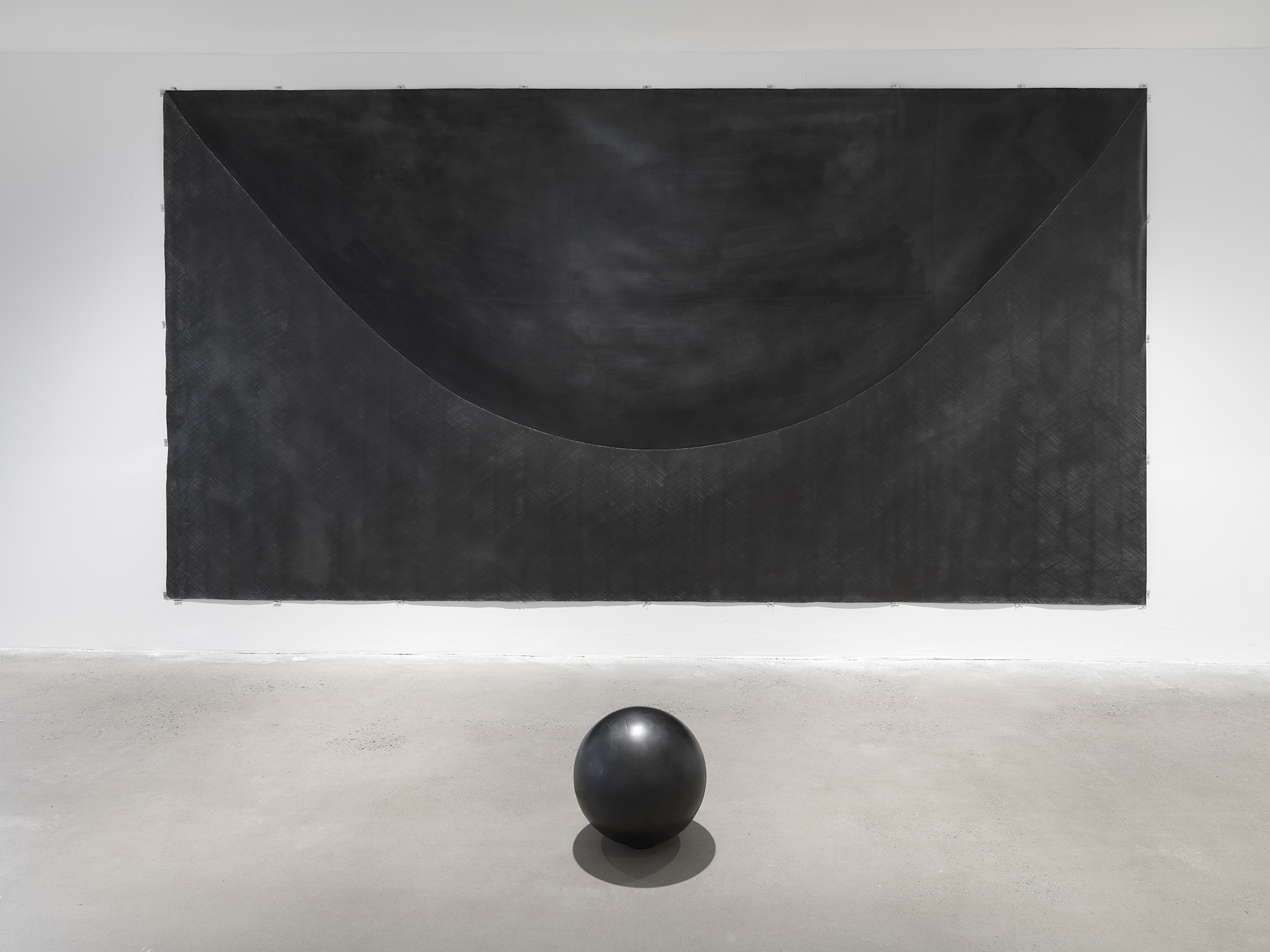Shows
Takesada Matsutani’s “Drop in Time”


It is easy to drive past the clutch of buildings that are Hauser & Wirth’s rural outpost in Somerset. They are inconspicuous alongside similar farmsteads concealed in an agrarian landscape of steep inclines, only glimpsed through rare gaps in overwhelming hedgerows that enclose the road. The gallery’s manicured buildings were previously barns for storing feed, and sheds for cattle; the now-smooth, white walls abut time-worn flagstones and aged timbers. This was an apt setting for Takesada Matsutani’s exhibition, “Drop in Time,” which evoked a legacy of farming procedures, albeit not the cliché of harvest sunshine, but unseemly acts in dark outbuildings, involving forced insemination—the works were produced from semen-like glue, deposited in singular gestures.
Matsutani was a member of the radical Gutai Art Association from 1963 until the group disbanded following the death of its joint founder, Jiro Yoshihara, in 1972. The group’s manifesto called for the false appearances of past art to be consigned to “the graveyard,” and for a close relationship between the human spirit and “the scream of matter itself.” In Matsutani’s case, this matter typically takes the form of fulsome gobbets of PVA, an innovative material when he started to experiment with it in the 1960s. Affected by its own weight and viscosity, the adhesive creeps over a base color in a wrinkled translucent film, or collects in a cloudy lump. His technique sometimes involves exhaling through a straw into a blob of glue as it begins to form a membrane, inflating it to become a breath-filled sac, clinging to the surface like a carbuncle, or bursting to form a flap like pared skin.

A manifestation of this element, an ominous swelling under a somber graphite surface, featured in Circle 17-11 (2017), hung high above the entrance to one of the converted barns. Alongside this, two other round works—Circle-White (2018), incorporating sagging pockets of semi-transparent material, and Triangle-18 (2018), a single thin sheath, puckered on a graphite background—bracketed a square white podium with a wooden orb at the center. This was the setting for a performance at the opening, animating the site-specific installation, Beginning a Drop in Time (2018). Brandishing a broom handle with a nail attached at one end, with a single thrust, the artist pierced a bladder, concealed in a suspended twist of fabric. A trickle of black ink was released over the sphere, the liquid dribbling and splattering onto the surrounding area below, with a small pool of ink forming as the evening progressed. The event was indicative of Matsutani’s approach, allowing just the effect of time and the pull of gravity to modify his precipitous action. In the second room of the exhibition, Une goutte (A drop) (2017) and Une goutte 18-1 (2018) were small canvases, both augmented with a solitary glutinous blob. The influence of gravity on this viscous goo had here been stopped prematurely; although the deposits were apparently left to set with minimal intervention, in fact they were “sculpted” by the artist using fans and hairdryers.

In a video produced by Hauser & Wirth for the exhibition, Matsutani stresses his materials’ “organic side” and indirect sexual inference. This was highlighted in works with yolk-colored grounds, such as the rectangular Object-Yellow (2018), and the egg-shaped Ellipse 17-1, (2017), each of which supports a large white deposit imbued with subtle, vein-like details as seen in albumen. Across a grassy area, another farm building hosted a small selection of prints and book works deploying graphic imagery that confirms the latent reproductive association of the paintings. Etchings such as La Propagation-10-Jaune (1967) show ovum dividing at the moment of fertilization.
The blue-chip gallery knows the importance of pedigree and provenance; at Bruton, even the café is billed as being run by the descendents of late artist Dieter Roth. But artistic atavism is usually a quiet understanding shared with discretion among cognoscenti, not brought into the open. Hauser & Wirth’s precise curatorial acumen has married a particular aspect of Matsutani’s oeuvre with the former sheds for livestock, connecting the works to the procedures of improving stock.
Takesada Matsutani’s “Drop in Time” is on view at Hauser & Wirth, Bruton, Somerset, until January 1, 2019.







